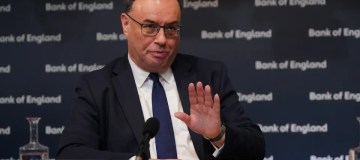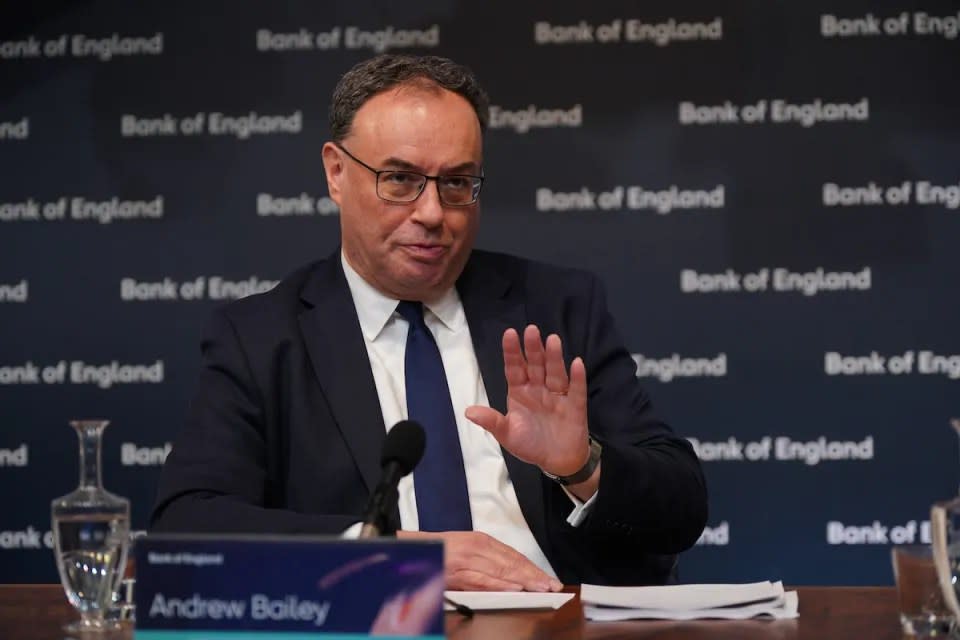

The UK’s biggest banks are set to post bumper annual profits when they report their 2023 results in the coming weeks. But why are they not being rewarded on the stock market?
Bank of England governor Andrew Bailey said in a speech last night that UK banks’ poor share prices were a “puzzle” after they had emerged in “sound health” from a choppy few years.
Britain’s high street lenders have reaped the benefits of the central bank’s interest rate hikes since late 2021, widening their net interest margins – reflecting the difference between what banks pay out and receive in interest.
Analyst consensuses for the five biggest banks show an estimated record £51.6bn in pretax profit for 2023.
Asia-focused giant HSBC is set to lead the sector by nearly doubling its annual profits to $31.4bn (£26.9bn). The bank was Britain’s biggest dividend-payer last year after awarding £8.4bn to investors.
However, none of the UK’s Big Four banks have seen their shares rise over the last 12 months.
The FTSE All-Share Banks index has dropped nearly 11 per cent in the last year. The worst performing stocks have been Natwest (down 32 per cent), Lloyds (down 21 per cent) and Barclays (down 23 per cent).
“In sum, the bad memories of the Great Financial Crisis of 2007-09 continue to dominate investors’ perception of the stocks,” said Russ Mould, investment director at AJ Bell.
“At best, the market does not seem to believe that current lofty levels of profitability can be maintained.”
The tailwind from higher interest rates has dropped off in recent months as deposit and mortgage competition intensifies and the Bank of England looks increasingly likely to lower rates in the first half of this year.
Analysts predict that banks’ combined profits have peaked and will be largely flat or fall over the next two years.
Philip Richards, a banking analyst at Bloomberg Intelligence, told City A.M. that poor share performance “reflects the revenue drag from margin squeeze with interest rate cuts pending and greater pass-through of prior hikes to savers”.
He added: “In addition, weak economic conditions weigh on lending growth and threaten an uptick in loan losses, with current fears surrounding commercial real estate markets, notably in the US.
“Elevated bank taxes and stricter regulatory requirements add to the uncertainty. Clarity on each is key to lifting valuation multiples, with no quick-fix appearing in sight.”
Benjamin Toms, an analyst at RBC, said the poor showing was “largely driven by macroeconomic factors”, including a likely recession at the end of last year.
“As interest rates hit 5.25 per cent, messaging from UK bank management suggested that we had reached peak net interest margins, and since that point we have seen a cycle of earnings downgrades,” he added.
RBC has estimated that the motor finance industry, particularly Lloyds and Close Brothers, could be hit by up to £16bn in compensation payments from a City watchdog probe into historic commission arrangements.
“The UK economy has been sluggish and the market has been rewarding cleaner investment stories from banks in the Eurozone,” said Will Howlett, financials analyst at Quilter Cheviot.
“On a longer-term view, we see structural pressures from increased competition from more tech-savvy players including the likes of Chase UK.”
Research published by Boston Consulting Group last month found 73 per cent of European banks traded below book value, although this was the case for just 37 per cent of US banks.
Toms said the transatlantic valuation gap was “unjustified, given the relative return profile of the UK vs US banks”.
Howlett added that US banks like JP Morgan had “delivered very strong profitability through a range of economic and market scenarios”, reflecting “diversification and market leadership”.





